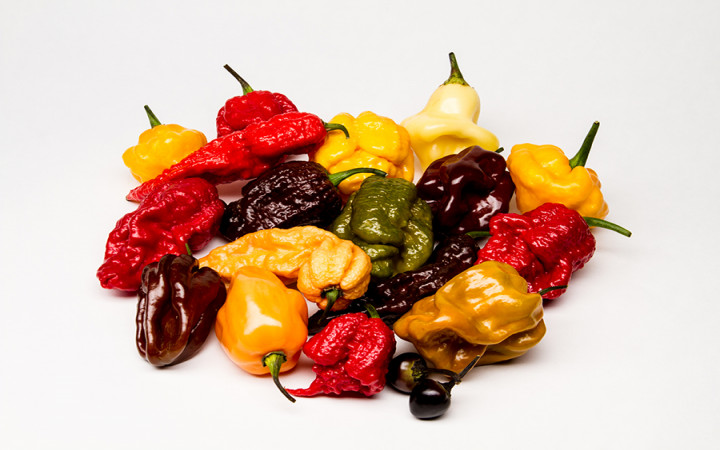Today’s Wonder of the Day was inspired by Jacob. Jacob Wonders, “How is Scoville unit measured for hot peppers?” Thanks for WONDERing with us, Jacob!
Are you ready to kick back and watch the big game? If you're a sports fan and you've got a big-screen television, you probably look forward to relaxing weekends on the couch watching your favorite players battle it out on the field.
Along with a comfortable couch and a high-definition television, there's something else that you need for the perfect viewing experience: snacks! What foods do you like to crunch on when it's game time? Chips? Salsa? Guacamole?
Another game-day favorite is the humble buffalo wing. Hot, crispy chicken wings slathered in sauce…delicious! If you're a fan of wings, what type of sauce do you like?
Some prefer traditional buffalo sauce, while others like a milder, buttery sauce that's not too spicy. For many people, though, there's no such thing as a wing sauce that's too hot. They want to sweat when they eat, so they choose sauces with names that include words like "fire" and "atomic."
For people who love spicy foods, there's no better source of heat than hot peppers. We're not talking about mild, garden-variety bell peppers. No way! If you're looking for heat, you need to start with jalapenos and habaneros.
If you've ever eaten a hot pepper, you know they can make your mouth feel like it's on fire. Still, jalapenos and habaneros are fairly mild when compared to the hottest peppers in the world.
The heat of hot peppers is measured on something known as the Scoville Heat Unit (SHU) scale, which measures the concentration of chemical compounds called capsaicinoids. An ordinary bell pepper, for example, would have a Scoville rating of 0.
Spicy jalapenos would have a rating of 2,500-8,000 SHUs. Hot habaneros would soar to 150,000-325,000 on the Scoville scale.
Habanero peppers pale in comparison to the world's hottest peppers, though. In 2013, the Guinness Book of World Records named the "Carolina Reaper" the world's hottest pepper, with a current Scoville scale rating of approximately 1,641,000 SHU — over 200 times hotter than a jalapeno!
The Carolina Reaper was developed by Ed Currie from Fort Mill, South Carolina, by crossing a Naga pepper from Pakistan with a Red Habanero from the Caribbean. Currie continues to experiment with various peppers to create even hotter peppers in the future.
The contest to be the world's hottest pepper is ongoing. Although unverified, a pepper from the United Kingdom called "Dragon's Breath" claims to have a Scoville rating of 2.48 million SHU. If that claim is verified, Currie claims that he has a new pepper — called Pepper X, for now — that will measure 3.18 million SHU!
Some people worry that hot peppers may be getting too hot these days. Recently, a man ended up in the hospital after eating a Carolina Reaper. Doctors think the pepper caused a case of reversible cerebral vasoconstriction syndrome (RCVS), which is a temporary narrowing of the brain's arteries.
This condition causes sudden headaches that result in extreme pain. The severity of the headaches and the speed with which they occur have led doctors to call them "thunderclap" headaches.
Other experts fear the amount of capsaicin in other super-hot peppers could damage a person's airways and cause anaphylactic shock. To avoid these dangerous side effects, pepper growers recommend never eating a hot pepper whole. Instead, they suggest using the peppers in small amounts to flavor sauces.




